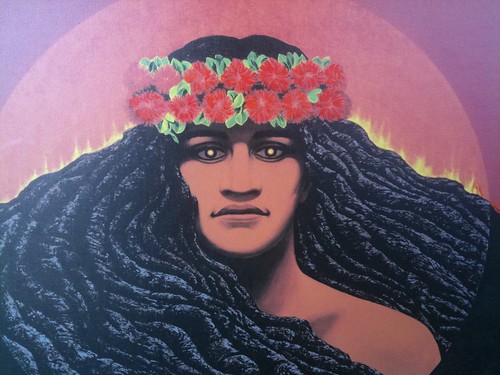I love YouTube and specifically having YouTube on our family AppleTV. Last night I discovered a series of excellent videos on YouTube about the recent spike in volcanic activity in Hawaii on the Big Island on YouTube, and I’ll share three of the best ones. Since Hawai‘i Volcanoes National Park closed on Friday (May 11, 2018) “in Anticipation of Possible Explosive Steam Event at K?lauea Summit,” this is a current event many of your students are likely to know about and be interested in.
This 2 minute video from USA Today (@usatoday) on May 10, 2018 (“Creeping lava, toxic gas: Why Hawaii volcano is a unique disaster”) not only has dramatic footage from the new fissures which opened on from the K?lauea Volcano last week, but also some excellent graphics helping viewers visualize the geothermal forces at work.
The 57 second video from the US Geologic Survey (@usgs) “Repeated overflows onto the Halema‘uma‘u crater floor” from April 27, 2018, is dramatic, especially when you consider how rare it’s been in the past three decades to see lava almost completely fill the entire K?lauea summit crater. USGS is posting frequent updates from the Kilauea summit observatory as well, and these are good to share even more current volcano activity videos with your students. They are mostly “talking head” volcanologist videos, and don’t include dramatic lava footage or detailed visualizations, but are short and still excellent to share. These are posted to the USGS YouTube channel.
The 10 minute video “Crazy Lava Flows Captured in Hawaii” from May 9, 2018, has 2.1 million views as of this writing, and includes footage which had to be very dangerous to capture. It’s “citizen journalist” footage, and can provide a segue with your students to not only discuss and marvel at the power of the earth’s geothermal core, but also the practical safety hazards of capturing and posting video footage to social media during a natural disaster.
The 10 minute video from May 10, 2018, “USGS/Possible Geo-Thermal Explosion/Hawaii,” showcases some dramatic earthquake visualization data from USGS from the week preceding the recording as well as the previous day. I’m not sure the exact tool the video creator was using, I think it’s more than USGS earthquake data in Google Earth. If you know please share a comment below or reach out on Twitter to @wfryer.
Two final videos I recommend are a little older but provide excellent historical as well as scientific background on K?lauea and what makes Hawaii volcanos so unique in the world. The 24 minute USGS video from October 2017, “K?lauea Summit Eruption | Lava Returns to Halema?uma?u,” is outstanding and provides both excellent scientific commentary as well as dramatic footage. I especially enjoyed learning about “Pele’s Hair,” which is a volcanic phenomenon I hadn’t heard of previously.
Finally,Dianna Cowern’s (@thephysicsgirl) video from March 2017, “Why Hawaii’s volcano is so UNUSUAL,” is terrific from the standpoints of scientific information, history, and also videography techniques. I love it and your students will too!
I have added these videos to my STEM Curiosity Links page. Although I’m not currently teaching a STEM class, sharing short videos like these (or portions of these videos using a tool like SafeYouTube) are one of my favorite ways to start class. It’s awesome to encourage student curiosity about our natural world, activate interest in current events, and provide them with safe links and places to go online to learn more.
If you use any of these links with your own students, please let me know!

“Pele” (CC BY-SA 2.0) by Wesley Fryer
If you enjoyed this post and found it useful, consider subscribing to Wes’ free, weekly newsletter. Generally Wes shares a new edition on Monday mornings, and it includes a TIP, a TOOL, a TEXT (article to read) and a TUTORIAL video. You can also check out past editions of Wes’ newsletter online free!
Did you know Wes has published several eBooks and “eBook singles?” 1 of them is available free! Check them out! Also visit Wes’ subscription-based tutorial VIDEO library supporting technology integrating teachers worldwide!
MORE WAYS TO LEARN WITH WES: Do you use a smartphone or tablet? Subscribe to Wes’ free magazine “iReading” on Flipboard! Follow Dr. Wesley Fryer on Twitter (@wfryer), Facebook and Google+. Also “like” Wes’ Facebook page for “Speed of Creativity Learning”. Don’t miss Wesley’s latest technology integration project, “Show With Media: What Do You Want to CREATE Today?”
Source : Excellent Videos on Hawaii Volcanos to Share with Students











